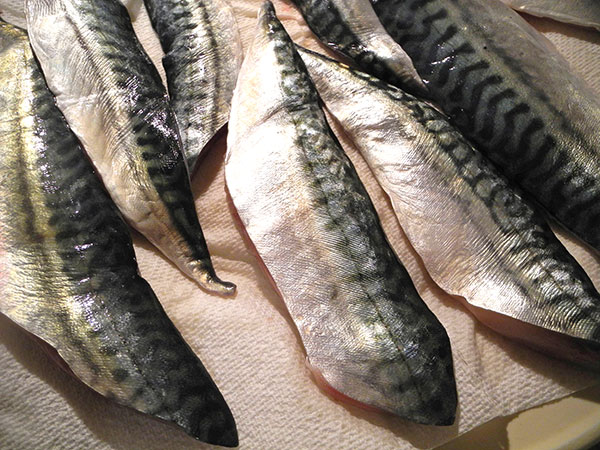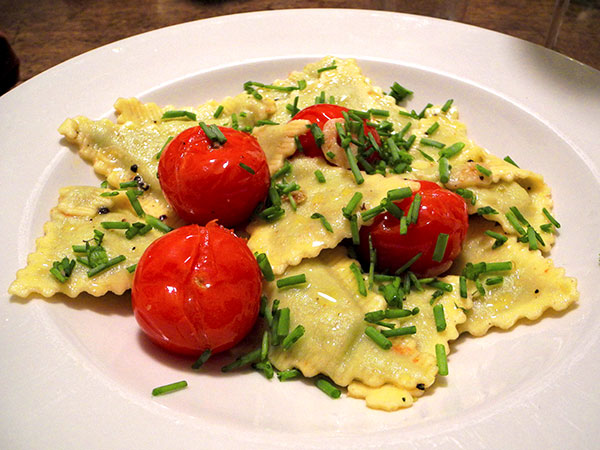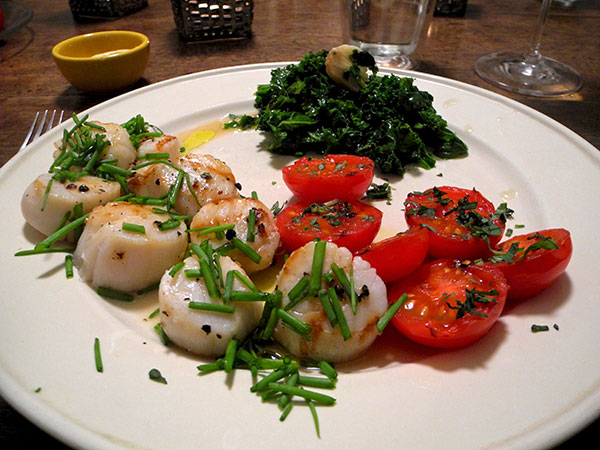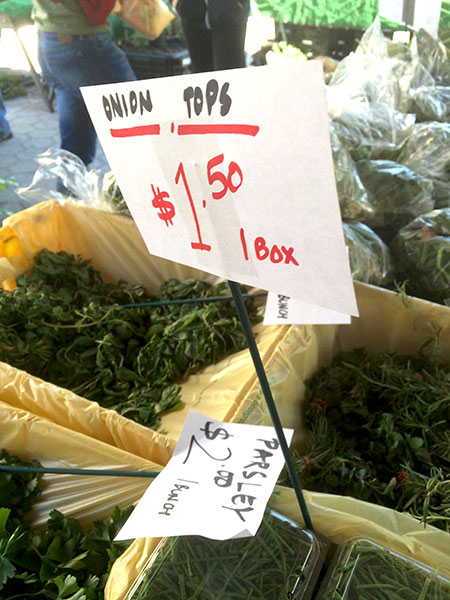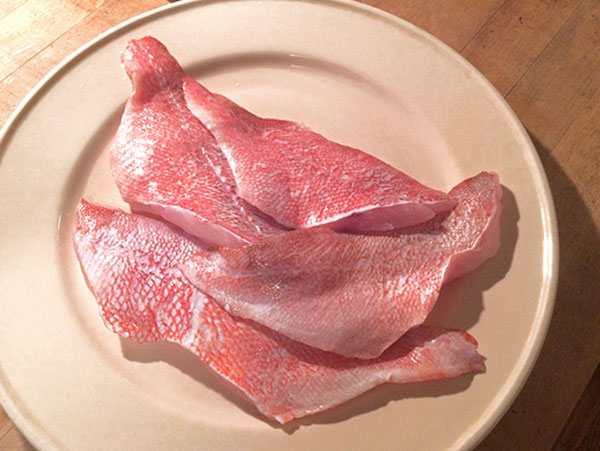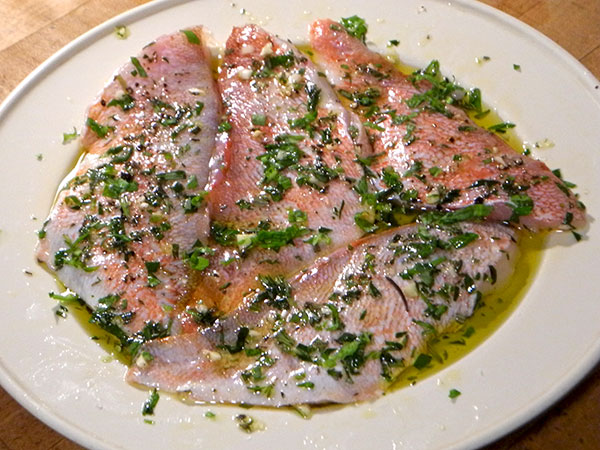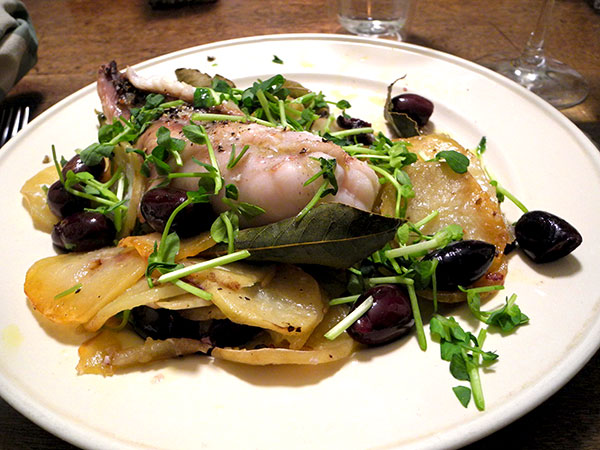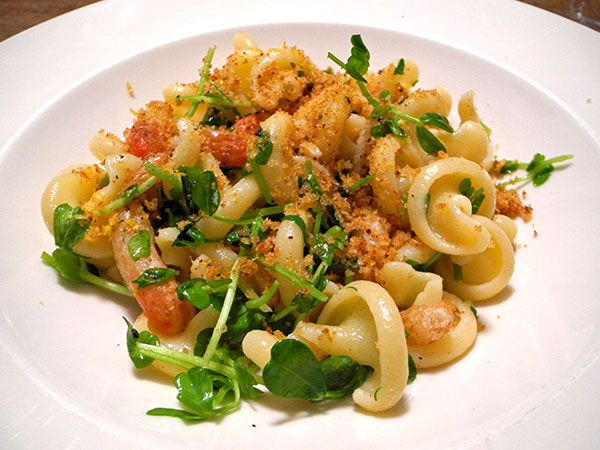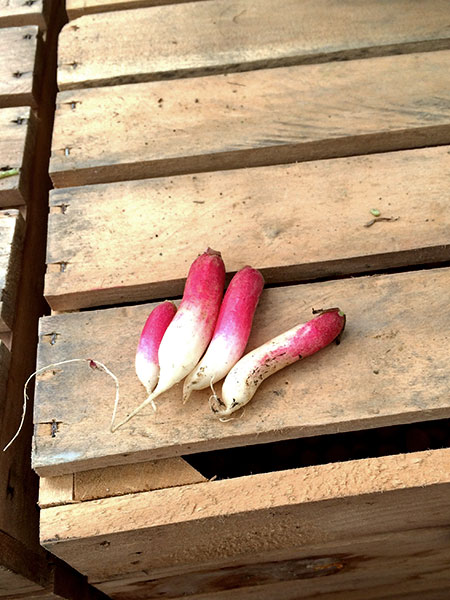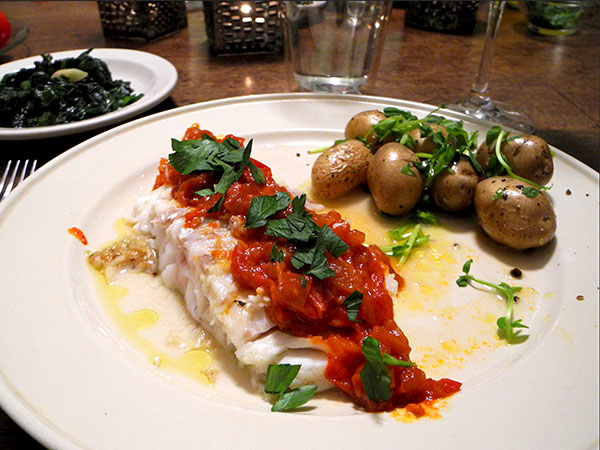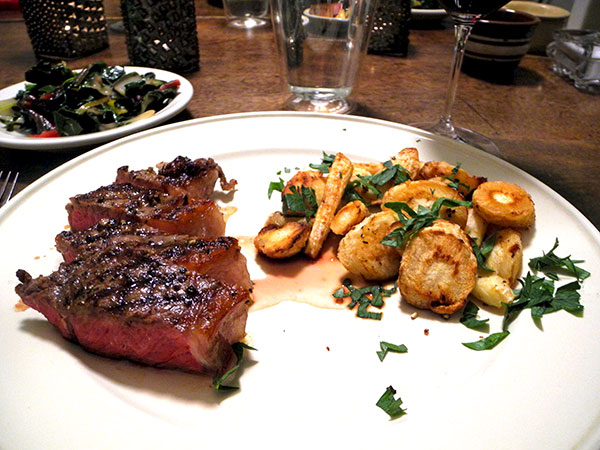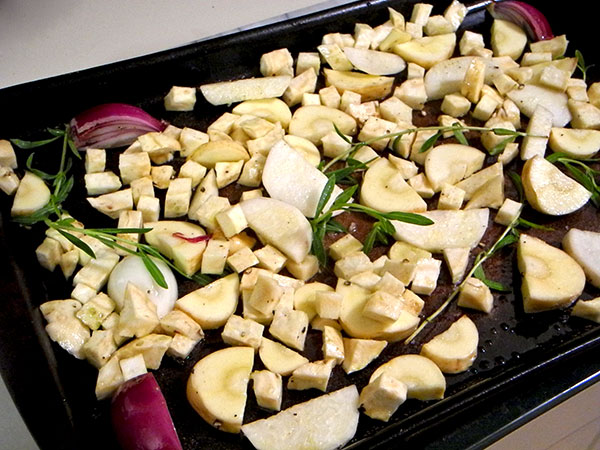
The roots came second in the preparation of this meal, not the usual order for me, but the slow-boiled beef veal tongue that they were to accompany had already been long absorbing the flavors of its broth when it was time to place the vegetables in a hot oven. The picture above shows them just before that moment, and the picture which follows, of the finished dinner on the plate, was taken almost an hour later.
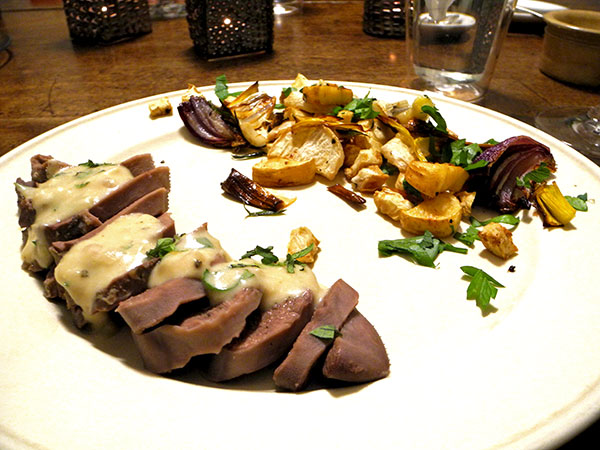
I love tongue (I’m talking about cooking here). Most people may think of it as fairly exotic, at the very least. The fact that it is in the category of ‘offal’, even if the etymology of that word has no relationship to a common like-sounding adjective, doesn’t help its popularity. If anyone has experienced it at all, it was likely to have been as part of a platter of cold meats, where it might have gone unremarked.
I learned to appreciate it many years ago, as a cold dish and also as a warm entrée. I was in my 20’s, and already fasciated by the great European cooking traditions, not least those of France and her adopted daughter Julia Child. I have no interest in consuming really exotic animals, which, to someone still as Eurocentric as I, means anything which would not be found in traditional European kitchens, but I’m game for, well, . . . European game of course, but also offal.
Until this year, my experience with tongue was limited to beef tongue, and that was in my Rhode Island kitchen in the late 60s, 70s and early 80s (my guest-friends back in that era must have thought I was half insane, even before the first of my suckling pig meals). It was my virtually complete dependence on the Union Square Greenmarket for food sources that recently introduced me to both lamb and veal tongue for the first time. In almost 30 years I have never seen tongue displayed in the stores in my New York neighborhood, even before it became upscale ; it’s even difficult finding liver, which was always a staple when I was growing up (although it’s possible that offal is finally about to assume its proper place at the upscale meat counter).
I soon learned that if you start looking for a recipe for this cut of meat, or even just some inspiration, you could go on forever. I jumped on this particular one from Epicurious, for Beef tongue, from May, 2000, because I liked the list of ingredients (and already had them on hand, except for the dill), and, while this may surprise some, it looked pretty straightforward (not too many steps). Since I had a veal tongue a quarter of the weight of the piece specified, I reduced the amounts of the other ingredients accordingly.
Note: After I had removed the tongue, I strained the cooking broth and placed it in a container in the freezer. I’ll probably use as the basis of a cabbage soup lunch.
- one twelve-ounce veal tongue from Consider Bardwell Farms (a perfect size for two people, as it’s rich, and there are no bones), prepared pretty much by following the recipe alluded to above, using, among others, these fresh ingredients: yellow onion from John D. Madura Farm; ‘music garlic’ cloves from Migliorelli Farm; bay leaf from Whole Foods; shallots from John C. Madura Farms; horseradish from Holy Schmitt’s in the Greenmarket; parsley from Rogowski Farm; local lemon juice from Fantastic Gardens of Long Island
- a melange of root vegetables, including diced celery root from Tamarack Hollow Farm, sliced parsnips from Migliorelli Farm, turnip from Norwich Meadows farm, a little halved or quartered red and yellow onion from John D. Madura Farm, all tossed with olive oil, salt, pepper, and sprigs of winter savory from Whole Foods, the savory placed on the bottom of an oven pan, the roots spread on top, everything roasted at 400º, sliced leeks from S. & S.O. Produce Farms added more than half of the way through, the vegetables removed from the oven when tender and golden (about 45 minutes), then tossed with chopped parsley from Rogowski Farm
- the wine was a French red, Château Moneins Haut-Médoc 2010
- the music was, once again, works by Wilhelm Friedemann Bach
